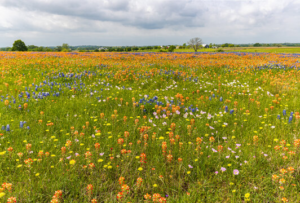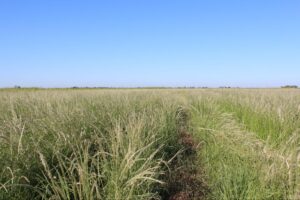Even though the leaves are just beginning to fall, now is the time to begin dreaming of spring.
Mother Nature needs time to get the beautiful, bright blooms of wildflowers just right. Wildflower beauty can abound on your property when you take advantage of fall planting, which offers the following benefits:
- Earlier blooms
- Additional time to plant
- Soil moisture
- Better weed control
Fall planting for spring is part of the natural cycle that finds flowers dropping seeds into the soil. Some wildflower seeds will essentially remain “awake” and actually germinate in the fall, while others remain patient for the warmth of spring. Some varieties need to endure winter’s freeze to break dormancy.
Why Wildflowers?
Wildflowers offer landowners a cost-effective option for restoration or habitat enhancement. While fall is a great season to plant, timing is of the essence:
- To plant wildflower seeds in a warm climate: Wait 60 to 90 days before the first freeze to give the roots enough time to establish a strong root system.
- To plant wildflower seeds in a cold/freezing climate: The best time frame is middle of November to early December. The soil needs to have a few freezes before planting so that the ground is cold enough for the wildflower to resist blooming until spring.
Now that we’ve covered the why and the when, let’s discuss how.
Finding the perfect spot to plant wildflowers means thinking about the following:
- Determine your soil type. All ground is different, and wildflower seed will respond differently to specific soil types. When you know this, you can properly prepare.
- Know the square footage. Seed needed is figured in pounds per acre, so having this information will avoid unnecessary waste.
- Identify sun and shade. Wildflowers need sun. If you are dealing with limited sun, the experts at Bamert can help you select shade-friendly species.
- Determine the condition of your space and current vegetation. First, get weeds under control and the space cleared out. If you intend to add the blooms to existing vegetation, make sure the wildflowers you plant interact well with the current species.
Finally, when it’s time to plant, follow these top tips:
- Scatter seeds evenly
- Lightly rake or press seeds into the soil
- Keep moist
- Control weeds
Choose Your Wildflower Blooms
The Bamert team carefully selects varieties of wildflowers that thrive in Texas and the southern United States. Then, they blend them in specific ratios for a variety of needs. Here are just a few examples:
- Texas Wildflower Blend: In our Texas Wildflower Blend, you’ll get a wide variety of beautiful wildflowers perfect for Texas and regions with similar climates. Plus, this blend features the often asked for Texas Bluebonnet seed.
- Our Bird & Butterfly Mix and Honey Bee Blend were crafted to attract pollinators.
- Wildlife Habitat Blend, Native Treats Blend and Upland Bird Habitat Blend feature wildflower seed blended with grasses and legumes. These blends were specially formulated for food plots and wildlife habitat enhancement projects.
Embrace the changing seasons and the cooler weather to come. With a fall wildflower planting plan in place, spring will bloom brighter than ever.



